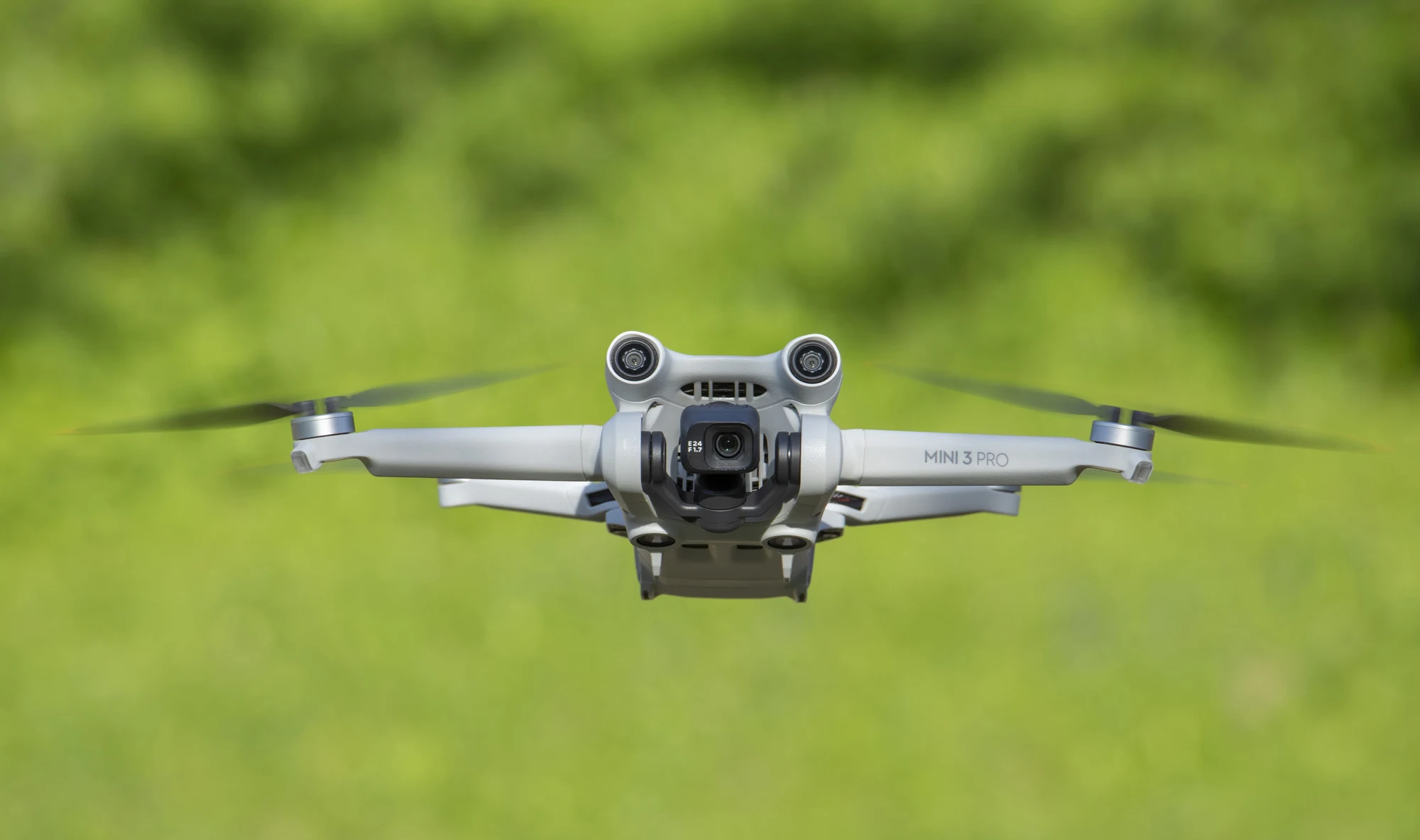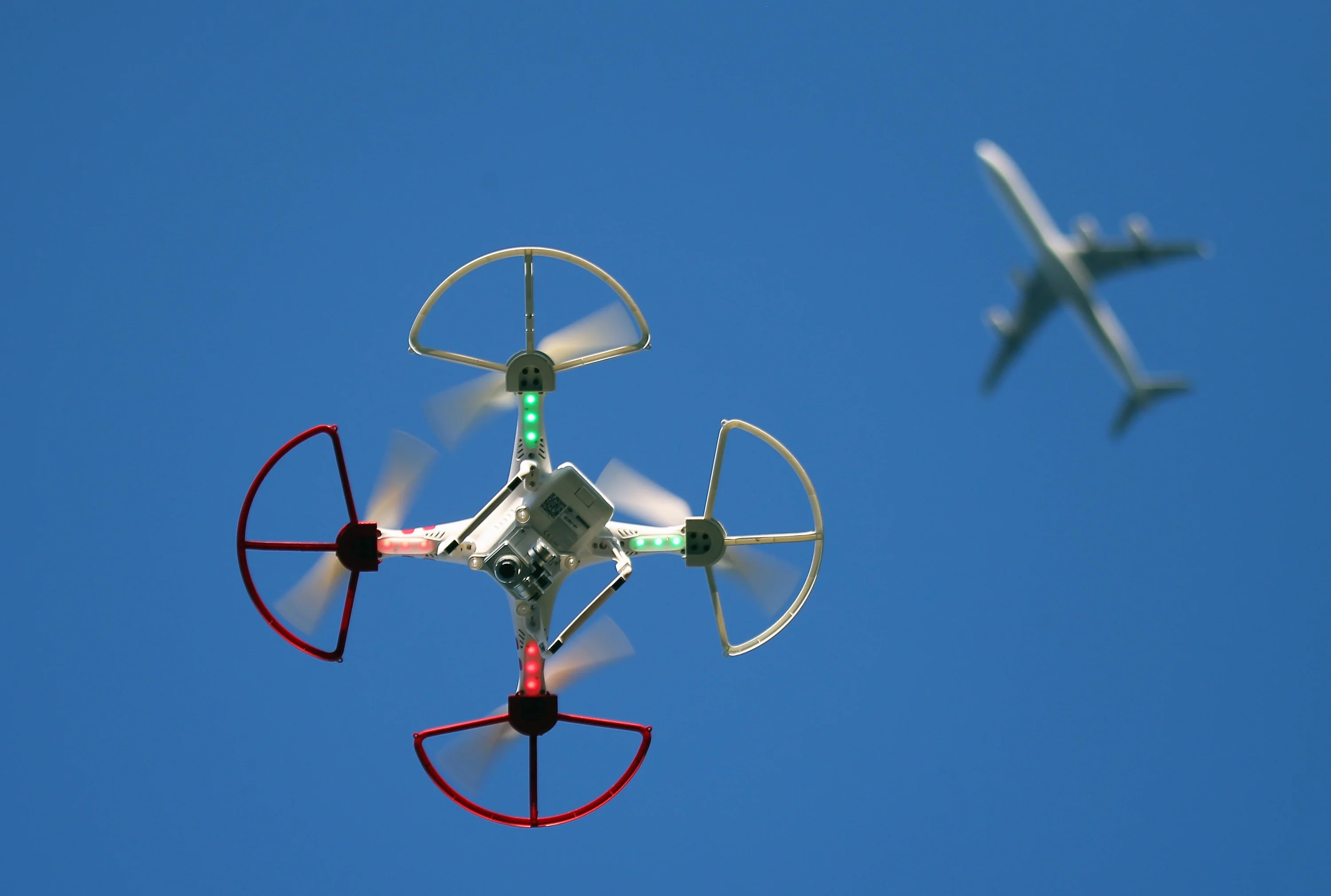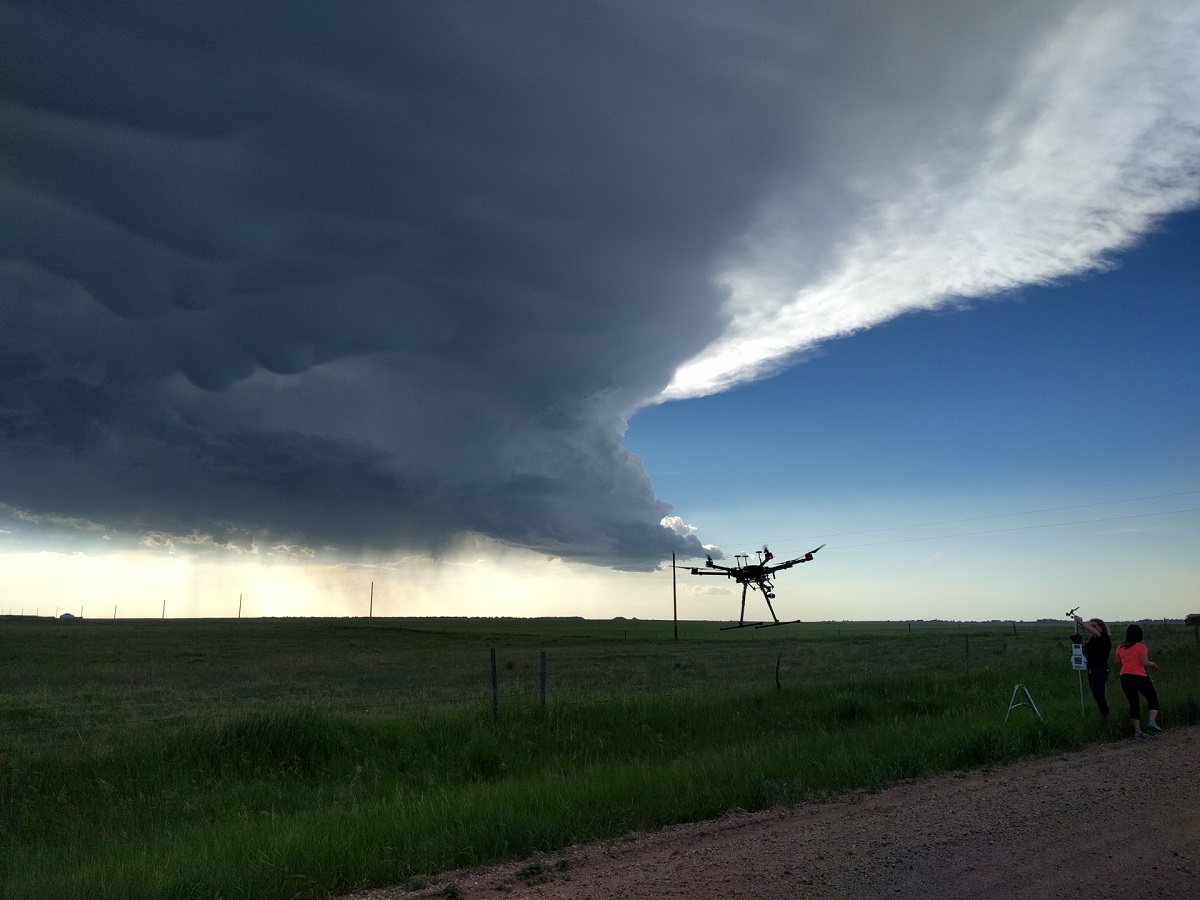Introduction
Welcome to California, the land of stunning landscapes and breathtaking beauty. If you’re a drone enthusiast or a professional pilot looking to fly your drone in the Golden State, you’ve come to the right place. California offers a plethora of breathtaking locations where you can fly your drone and capture mesmerizing aerial shots.
However, before soaring through the skies with your drone, it is essential to familiarize yourself with the regulations and guidelines governing drone usage in California. Understanding these rules will not only ensure your safety but also help you avoid potential legal issues.
California has established a set of drone regulations that align with the Federal Aviation Administration (FAA) guidelines. These regulations aim to maintain the safety and privacy of individuals while still allowing for the enjoyment and creative use of drones.
In this guide, we’ll explore the various locations in California where you can fly your drone legally. From public parks and open spaces to state and national parks, beaches, forests, and wilderness areas, there are plenty of opportunities to capture stunning aerial visuals across the state.
It’s important to note that while we provide an overview of drone regulations in California, it is crucial to check for any specific local or city regulations as they may have additional restrictions or permits required for drone flights.
So, if you’re ready to embark on a drone-flying adventure, let’s dive into the world of drone-friendly locations in California!
Overview of Drone Regulations in California
When it comes to flying drones in California, it’s important to adhere to the regulations set forth by the state authorities. The regulations in California align with the guidelines established by the Federal Aviation Administration (FAA) to ensure safe and responsible drone usage. Here’s a summary of the key regulations you should be aware of:
- Registration: All drones weighing more than 0.55 pounds must be registered with the FAA before flying. This includes recreational drones as well as those used for commercial purposes.
- Flight Restrictions: Drones must always be flown within visual line of sight, meaning you should always be able to see your drone with unaided vision. Additionally, drones should not be flown above 400 feet from ground level.
- No-Fly Zones: There are several areas in California where drone flights are restricted or prohibited. These include airports, military bases, national parks, and wilderness areas. It’s important to refer to the FAA’s B4UFLY app or their website to check for any temporary flight restrictions or prohibited airspace in your intended flying area.
- Drone Operator Age: To operate a drone in California, you must be at least 16 years old. If you are flying commercially, you are required to pass the FAA Remote Pilot Certification exam.
- Respecting Privacy and Safety: It’s essential to respect the privacy of individuals while operating your drone. Avoid flying over private properties without permission and be cautious of any crowded areas or events. Always prioritize safety and follow designated safety protocols.
By following these regulations, you can ensure responsible and legal drone usage in California. It’s important to note that these regulations may be subject to change, so it’s always a good idea to stay updated with the latest guidelines and check for any additional restrictions imposed by local or city authorities.
Public Parks and Open Spaces
California is home to a vast array of public parks and open spaces that provide excellent opportunities for drone enthusiasts to capture stunning aerial footage. These locations offer wide-open areas, scenic landscapes, and beautiful vistas for drone flights. However, it’s essential to research and adhere to any specific regulations or restrictions imposed by the park authorities.
One popular destination for drone flights is the Griffith Park in Los Angeles. This expansive park offers breathtaking views of the city skyline, the iconic Griffith Observatory, and the surrounding natural beauty. Just make sure to avoid flying near the observatory or any crowded areas.
In the Bay Area, the Golden Gate Park in San Francisco provides ample space for drone pilots to explore. With its lush greenery, serene lakes, and historic landmarks, this park offers a diverse range of aerial photography opportunities. Be sure to check for any specific regulations related to drone usage in the park.
If you’re visiting the San Diego area, Balboa Park is a must-visit location for drone enthusiasts. This expansive urban park boasts stunning architecture, beautiful gardens, and panoramic views. However, it’s vital to respect the park’s guidelines and avoid flying over any restricted areas.
When flying drones in public parks and open spaces, it’s crucial to prioritize safety and respect the privacy of other park-goers. Always maintain a safe distance from people, property, and wildlife. It’s also advisable to fly during quieter times to minimize any potential disruptions or concerns.
Remember, each park may have its own unique regulations regarding drone usage, so be sure to check with the park authorities or visit their website for any specific guidelines. By following these regulations and being considerate of others, you can enjoy a safe and enjoyable drone-flying experience in California’s public parks and open spaces.
State and National Parks
If you’re looking to explore the natural wonders of California from a bird’s-eye view, the state and national parks offer incredible opportunities for drone enthusiasts. These protected areas showcase the state’s diverse landscapes, from majestic mountains to rugged coastlines and lush forests. However, it’s crucial to research and adhere to the specific regulations set by each park to ensure responsible and legal drone flying.
Yosemite National Park is a crown jewel of California, drawing millions of visitors annually with its breathtaking waterfalls, towering granite cliffs, and serene valleys. While drones are generally not permitted in Yosemite, there are designated areas and trails where you may be able to capture stunning shots. Make sure to contact the park authorities or check their website for the latest guidelines.
Joshua Tree National Park is another iconic destination for nature lovers. This unique desert landscape is dotted with towering Joshua trees and fascinating rock formations. While drones are currently prohibited in Joshua Tree, there are nearby public lands and open spaces where you can still capture the beauty of the area from the sky.
For those exploring the coastal region, Point Reyes National Seashore offers breathtaking views of rugged cliffs, sandy beaches, and pristine marine habitats. While drone flights are not permitted within the national seashore boundaries, there are areas outside the park where you can still capture stunning coastal shots.
California’s state parks also offer fantastic opportunities for drone photography and videography. Big Sur State Park along the central coast is known for its dramatic coastline and majestic redwood forests, providing a stunning backdrop for aerial footage. However, it’s important to check for any specific regulations or restrictions imposed by the park authorities.
When flying drones in state and national parks, it’s crucial to prioritize the protection of the park’s natural resources and wildlife. Respect any closures, follow designated flight paths if available, and avoid flying near sensitive areas such as nesting sites or wildlife habitats. By doing so, you can capture stunning footage while preserving the pristine beauty of these protected areas.
Beaches and Coastal Areas
California’s coastline is renowned for its stunning beaches, rugged cliffs, and picturesque coastal towns. Flying a drone along the coast can provide breathtaking views and stunning aerial footage of the Pacific Ocean. However, it’s crucial to be aware of the specific regulations set for drones in beach and coastal areas to ensure a safe and legal flying experience.
One popular destination for drone flights is the famous Santa Monica Pier in Los Angeles. This iconic landmark offers a unique perspective of the coast, bustling beachgoers, and the stunning Pacific Ocean. However, it’s important to keep in mind the proximity to the airport and any additional local regulations that may apply.
The breathtaking coastline of Big Sur is another drone-friendly location. With its rugged cliffs, turquoise waters, and stunning rock formations, this area provides ample opportunities for capturing dramatic aerial shots. Remember to respect any private property boundaries and adhere to any specific regulations set by local authorities.
If you find yourself in San Diego, the La Jolla Cove offers a picturesque setting for drone flights. With its stunning ocean views, rugged cliffs, and abundant marine life, this area provides a unique perspective for aerial photography. Be sure to comply with any regulations or restrictions set by the San Diego Parks and Recreation Department.
When flying drones on beaches and coastal areas, it’s important to be considerate of other beachgoers and wildlife. Maintain a safe distance, avoid crowded areas, and respect any restricted zones. It’s also essential to be mindful of the impact of your drone on marine life and refrain from disturbing or approaching them.
Lastly, always check for any local ordinances or beach-specific regulations that may apply. Some beaches may have restrictions on drone usage during peak hours or specific events. Staying informed about these regulations will ensure a safe and enjoyable drone-flying experience along California’s stunning coastline.
Forests and Wilderness Areas
California is blessed with diverse forests and wilderness areas, offering a tranquil escape into the beauty of nature. These lush green landscapes, towering trees, and serene lakes create the perfect backdrop for capturing stunning aerial footage with your drone. However, it’s essential to be aware of the specific regulations and guidelines for flying drones in these protected areas.
The towering redwoods of Muir Woods National Monument near San Francisco offer a magical setting for drone flights. These ancient giants provide a unique perspective of the forest canopy, creating a mesmerizing visual experience. However, it’s important to note that drone usage is currently prohibited within Muir Woods to preserve the tranquility of the area.
For those venturing to the Sierra Nevada Mountains, the Sequoia and Kings Canyon National Parks are a must-visit. These parks are home to the iconic giant sequoias, some of the world’s largest trees. While drones are generally not permitted within the national parks, there are nearby areas such as national forests or designated wilderness areas where drone flights may be allowed. Always research and respect any specific regulations in these areas.
The Yosemite National Park, with its majestic waterfalls, granite cliffs, and vast wilderness, is a dream come true for drone pilots. However, it’s vital to note that drone usage within Yosemite is currently prohibited. Fortunately, there are nearby national forests and recreation areas where you may be able to capture stunning aerial shots of the surrounding landscape.
When exploring forests and wilderness areas, it’s crucial to prioritize the protection of the natural environment. Avoid flying over wildlife, sensitive habitats, or areas where drone usage is explicitly prohibited. Always follow any designated flight paths or guidelines provided by local authorities. By doing so, you can enjoy the beauty of California’s forests and wilderness areas while respecting the preservation efforts of the parks.
Remember, regulations may vary depending on the specific park or wilderness area, so it’s essential to research and follow the guidelines provided by each location. By doing your due diligence and flying responsibly, you can capture breathtaking aerial footage while maintaining the integrity of these stunning natural landscapes.
Federal Restricted Airspace
When it comes to drone flying, it’s important to be aware of the various types of restricted airspace, including those established by federal authorities. These restricted airspace areas are put in place to ensure the safety of manned aircraft, as well as the protection of critical infrastructure and sensitive areas. Understanding and respecting these restrictions is crucial for a safe and legal drone-flying experience.
One of the most prominent restricted airspace areas is around airports. The Federal Aviation Administration (FAA) establishes specific guidelines for drone operations near airports to prevent interference with manned aircraft. It’s important to ensure that you are aware of the boundaries and altitude restrictions in these areas and to obtain any necessary authorizations or permissions required for drone flights.
In addition to airports, there are other types of federal restricted airspace that drone operators must be mindful of. These include military installations, national security areas, and emergency response zones. These areas are off-limits to drones and flying in or near them can lead to serious consequences, including legal action.
Another type of restricted airspace is the Temporary Flight Restriction (TFR) zone. TFRs are established for a variety of reasons, such as VIP movements, wildfires, airshows, and sporting events. These temporary restrictions are put in place to ensure the safety of both manned and unmanned aircraft. It’s essential to stay updated on TFRs in the areas where you plan to fly your drone and to adhere to any restrictions or requirements imposed during these periods.
To help drone operators stay informed about restricted airspace, the FAA provides resources like the B4UFLY app and the FAA UAS Data Display System. These tools allow you to check for any temporary flight restrictions, review airspace boundaries, and access real-time information on airspace conditions.
It’s important to remember that even if you have obtained authorization to fly in certain restricted airspace areas, it is always crucial to prioritize safety and exercise caution. Always maintain a visual line of sight with your drone, avoid flying near or over people, and be aware of any potential hazards or obstructions in the vicinity.
By educating yourself on the various types of restricted airspace and adhering to the guidelines set by federal authorities, you can ensure a safe and responsible drone-flying experience while respecting the importance of airspace security and safety.
Local and City Regulations
In addition to the state and federal regulations, it’s important to be aware of any local or city-specific regulations that may apply to drone flights in California. These regulations can vary from one municipality to another and are put in place to address specific concerns or considerations in the local area.
Some cities in California have enacted ordinances that impose additional restrictions on drone operations. These may include limitations on flying drones in designated residential areas or certain public spaces. Additionally, some cities require permits or licenses for commercial drone operations, even if you have already obtained a Part 107 Remote Pilot Certification from the Federal Aviation Administration (FAA).
For example, San Francisco has specific regulations that drone operators must adhere to. These regulations include restrictions on flying drones near hospitals, schools, government buildings, and large events and gatherings. In addition, drone pilots in San Francisco must obtain a permit from the San Francisco Film Commission if they plan to use their drone for commercial purposes.
Los Angeles, another major city in California, has also implemented local regulations on drones. The Los Angeles Municipal Code prohibits flying drones within 500 feet of any motion picture, television, or still photography production without obtaining prior permission.
When flying in a specific city or municipality, it’s crucial to do your research and understand the local regulations that may apply. Check the official website of the city or contact the local authorities to obtain information on any drone-specific regulations or permits required for flying in that area.
It’s important to respect these local regulations to ensure a safe and legal drone-flying experience, as well as to maintain positive relationships between the drone community and local communities. By being informed and compliant with the local regulations, you can enjoy flying your drone while respecting the concerns and considerations of the specific city or municipality.
Drone-Friendly Communities and Events
California is home to numerous communities and events that embrace and celebrate the drone community. These drone-friendly locations provide an opportunity to connect with fellow drone enthusiasts, participate in drone-related activities, and enjoy unique flying experiences.
One such community is the Silicon Valley Drone League, based in the heart of the technology hub. This league organizes drone races, workshops, and networking events, creating a platform for drone pilots to showcase their skills and meet like-minded individuals in the industry.
The International Drone Film Festival, held annually in Los Angeles, is another noteworthy event for drone enthusiasts. This festival showcases the creativity and talents of drone filmmakers from around the world, offering a unique opportunity to witness the incredible aerial footage captured by drones.
For those interested in aerial photography, the Dronestagram community provides a platform for drone photographers to share their captivating imagery. This online community allows drone enthusiasts to connect with each other, exchange tips and techniques, and celebrate the art of drone photography.
California also hosts several drone races and FPV (first-person view) events throughout the year. These events feature exciting drone races through challenging courses, allowing pilots to test their skills and compete against other talented racers. It’s a fantastic way to experience the thrill of drone racing and be part of a vibrant community.
Additionally, various cities have designated areas or parks specifically designed for drone flying. These locations often provide designated flight zones, obstacle courses, and safety measures to ensure a safe and enjoyable drone-flying experience for enthusiasts of all skill levels. Some communities even offer workshops and training sessions to help beginners learn the basics of drone operation and responsible flying.
When participating in drone-friendly communities and events, it’s important to follow any guidelines or rules set by the organizers. This includes respecting safety measures, considering the privacy of others, and adhering to any specific regulations imposed by local authorities.
By embracing these drone-friendly communities and events, drone enthusiasts can enhance their skills, connect with fellow pilots, and foster a sense of camaraderie. These communities create a supportive environment where individuals can learn, grow, and share their passion for drones in a responsible and enjoyable way.
Conclusion
California offers a plethora of breathtaking locations where drone enthusiasts can capture stunning aerial footage and explore the wonders of the state from a new perspective. However, it’s crucial to familiarize yourself with the regulations and guidelines governing drone usage to ensure a safe and responsible flying experience.
Understanding the drone regulations in California, which align with the Federal Aviation Administration (FAA) guidelines, is the first step towards responsible flying. From registration requirements to flight restrictions and respecting privacy and safety, adhering to these regulations will help you avoid legal issues and fly your drone with confidence.
Throughout California, there are a variety of locations that welcome drone flights. From public parks and open spaces to state and national parks, beaches, forests, and wilderness areas, there are ample opportunities to capture stunning aerial visuals. It’s important to research and respect any specific regulations or restrictions set by the park authorities or local communities in these areas.
Additionally, being aware of federal restricted airspace, such as airports, military bases, and emergency response zones, is crucial. Staying informed about Temporary Flight Restrictions (TFRs) and checking for any local or city-specific regulations will help you navigate through the airspace safely and responsibly.
Moreover, drone-friendly communities and events create opportunities to connect with fellow enthusiasts, participate in races and competitions, and celebrate the art of drone photography. These communities foster a supportive environment where individuals can share their passion and learn from each other.
In conclusion, by staying informed about the regulations, respecting the privacy and safety of others, and flying responsibly, you can enjoy the beauty of California from above while contributing to the positive image of the drone community. With proper knowledge and adherence to the guidelines, drones can continue to be a powerful tool for capturing stunning visuals and showcasing the remarkable landscapes of California.
























